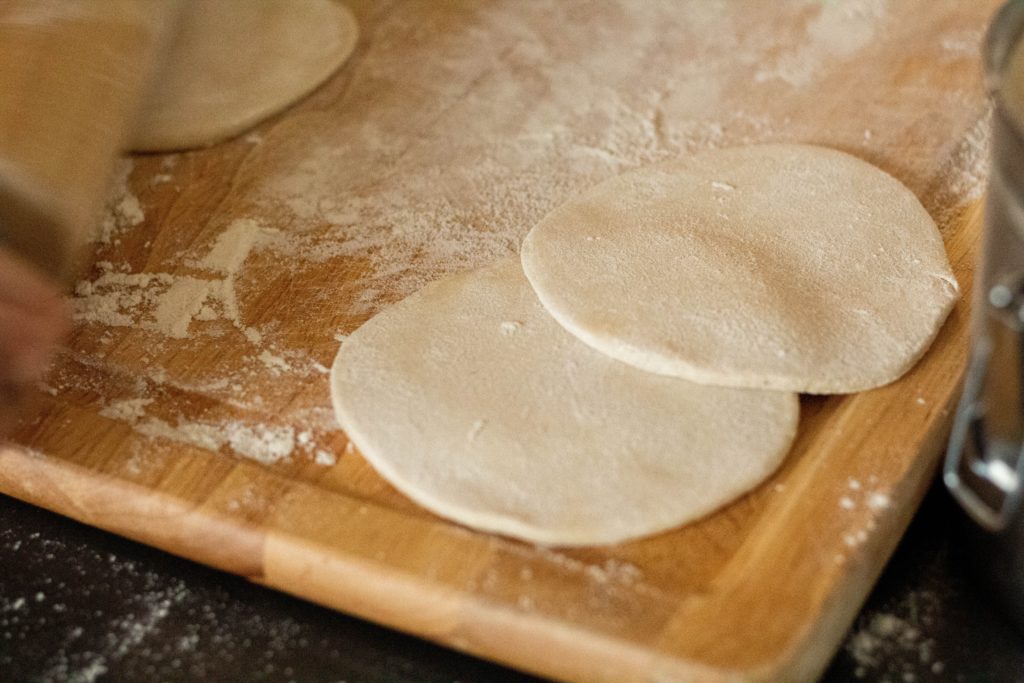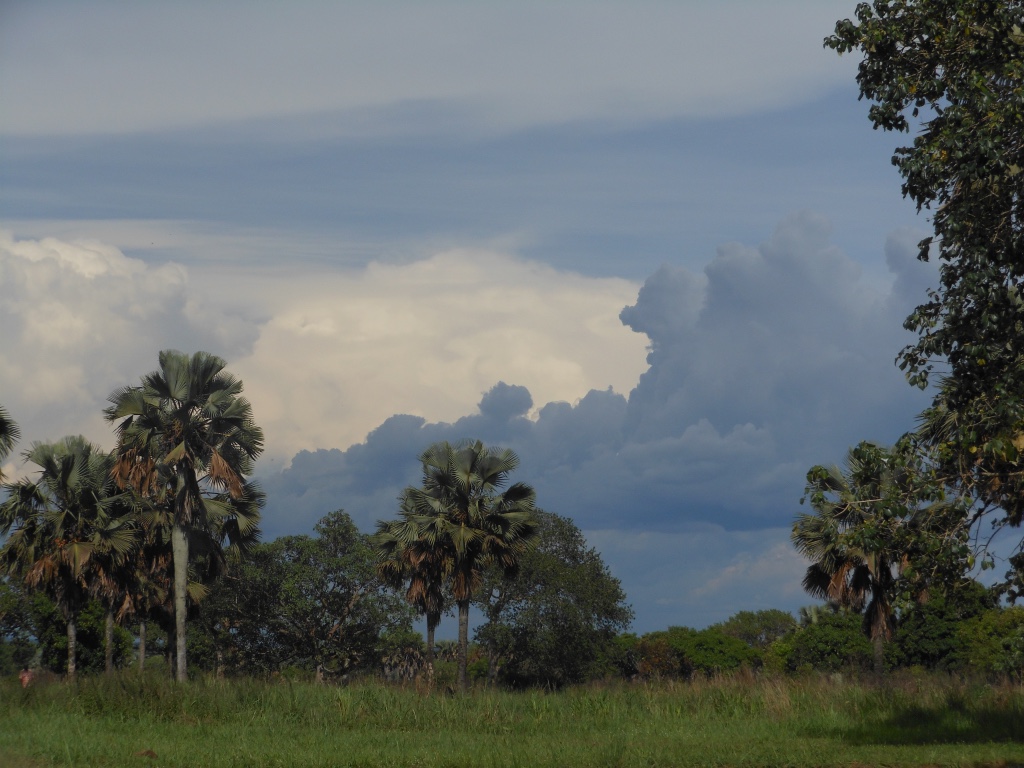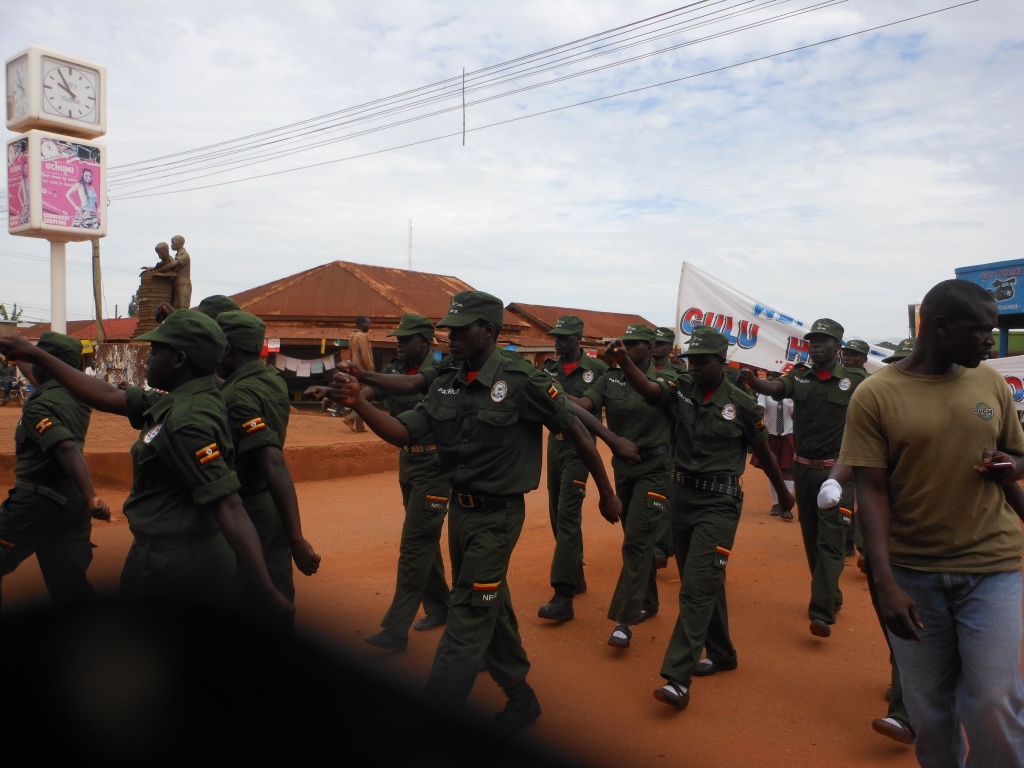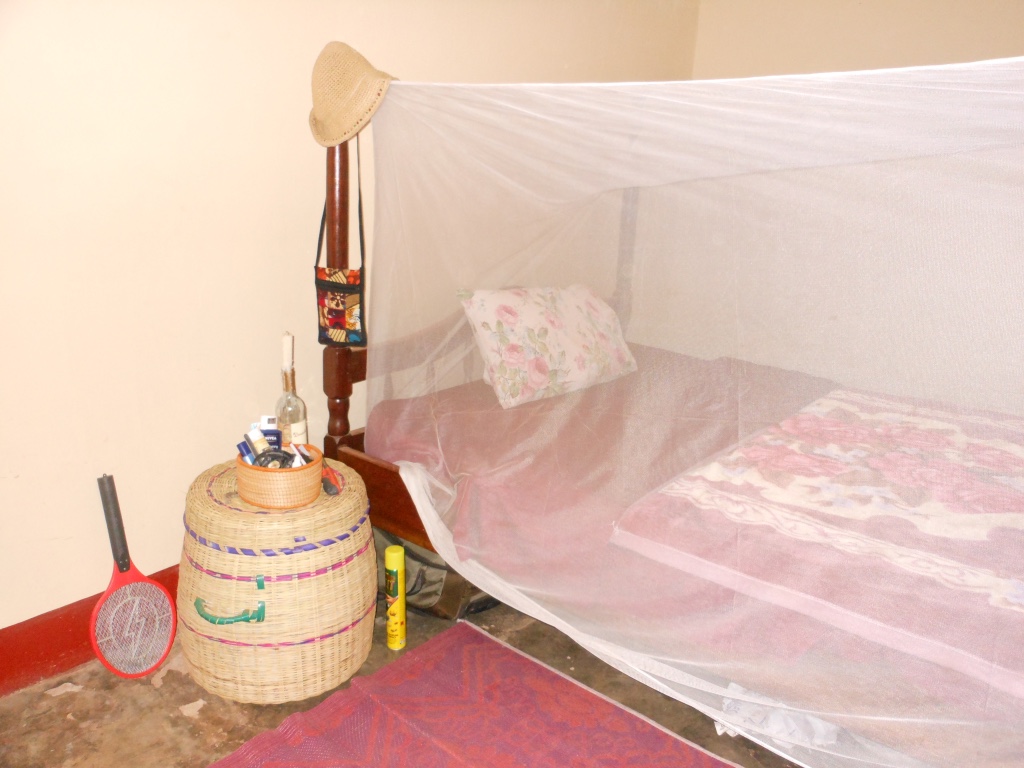
Aaaaah – rain AND real Mexican food. Life is sometimes good in Uganda. Tonight several of us were invited to dinner by an ex-PCV, returned as a USAID employee. We suggested our version of Mexican food: you know beans cooked by Happy Nest (none of us has enough propane to cook beans for 4 hours), a little taco seasoning, some chapati to serve as surrogate tortillas…. a few toppings. His response, after some silence, “Well I can make tortillas, have you forgotten that I’m Mexican???”
Well yes – I guess I did. No taco seasoning for this man. We were treated to the “full Monty” of the Mexican food world: hand made corn tortillas from maize flour brought from the States, real Mexican rice, beans he cooked, a vat of guacamole (good avocados here) and fresh Talapia – all followed by a shot of Tequila brought from home.
It is surprising the role food plays when you’re away from home. It can either make you nauseous with the constant rehashing of local fare, or light up your life. Tonight was a light-up-your-life night: partially because of the food, but in equal measure, it’s the camaraderie of cooking together and sitting around a table sharing a meal and conversation. His wife is in the States, as he will be shortly, awaiting the birth of their first baby. And because he’s paid real money and lives in an ex-Pat style house (really lovely) with a real kitchen, it was like Christmas. Thank you Drew! We can live another week…

And this to the background of thunder and a little rain. When I returned home (just) the gods were continuing to smile because I have both power and water. Last night power came and went three times before deciding to stay for more than a few thrilling seconds and we have been hauling water for the last week. It’s rainy season! What’s that about anyway?
Last week I spent in Kampala as part of a committee to revise training for new PC-trainees. An OK week, but spent in the confines of the ever-so-luxurious City Annex and at the new PC HQ during the day. New PC digs are pretty nice! No falling down walls, good view, nice light… And in the coming weeks I’ll be going back for Train the Trainer sessions and then to participate in the actual training of the new group in July. Not sure how I feel about all that, but it should be interesting and hopefully training will be improved. Every activity is another month bringing us closer to a year at site – and many say that’s the turning point. There was some discussion today about service in the north being much more stressful than elsewhere in Uganda. Not having lived elsewhere in Uganda, I couldn’t say. But there is truth to the reality of living in a post-conflict region.
There is a lot of grief and trauma in the air here and it is palpable. The people – as I have aid before – are the most gentle of Uganda, but if you are sensitive at all to the vibes of a place, it’s pretty exhausting in a way that doesn’t always make sense from a left-brained perspective. This place shares some of the characteristics of other post-war areas – including post-war Europe. There is a mind-set that develops with so much aid coming in and it’s not always productive or in any one’s best interest. I’m not saying there shouldn’t be help, it just needs to be delivered in a way that promotes skills and not dependency and learned helplessness. That’ a tricky balance and it continues to be illuminating.

In other news – the day before I left for Kampala was the run-up to Labor Day here – a federal holiday – and great preparations were under way for President Museveni’s visit as seen to the left. Roads were receiving a last minute and long overdue face lift; the marching band was practicing…. So I went to hang out and watch the show – practically in my back yard.

Ten years ago there were 20 million people in Uganda – today, there are 34 million. You get my point. There was also voluntary HIV/Aids testing…. The other upside of condom usage – HIV reduction. From the looks of the streets in Gulu, the use-a-condom campaign is working. ‘Nuf said. Except that we were given a foot long strip of them in our medical kits and why were they were packaged in camouflage design? No doubt so no one can find them in the out-back?
And on that note of query, I’m off to bed.
